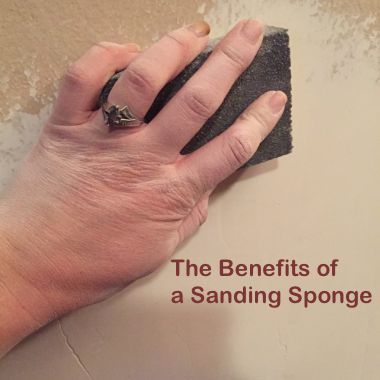There are several different kinds of gritted sandpaper on the market. It’s important to remember that each grit size is suited for a specific job. Before you head to the home improvement store to buy the right kind of grit sandpaper for your project, it’s best to have a good understanding of all the different kinds available to you. The most common kinds of grit sandpaper include:
❖ 40-grit, ❖ 80-grit, ❖ 100-grit,
❖ 120-grit, ❖ 220-grit, ❖ 400-grit
Always remember, as the numbers increase, the grains get smaller, and the grits on the sandpaper get finer. For instance, the lower numbers have larger grains and are more coarse than the higher numbers. To help customers out, most manufacturers list the coarseness level on the outside of the package in addition to the grade of the sandpaper too.
Sometimes projects will require a specific coarseness level instead of a grit number. If you’ve ever followed a step-by-step home improvement guide, you might have come across this. The different coarseness levels include:
- Coarse sandpaper: 40 to 50-grit range
- Medium sandpaper: 60 to 100-grit range
- Fine sandpapers: 120 to 220-grit range
- Extra fine sandpaper: 240 to 400-grit range
It’s important to note though that sandpaper with a grit of 220 or more is simply unsuitable when it comes to sanding drywall. Why? 220-grit sandpaper will make scratches that are barely visible to the naked eye. Like mentioned above, the larger the grit number, the finer the sandpaper. For drywall, 100 or 120-grit sandpaper is what’s recommended by professionals.
As a second option, you can choose a sanding sponge. Some drywall experts swear by the sanding sponge as they are much more durable than regular sandpaper.
Necessary drywall tools
In addition to the sandpaper, you’ll need a few other accessories. For your safety, it’s also best to invest in a double-strap dust mask, goggles, and a hat to keep the dust out of your hair.
You can even use earplugs to keep the dust out of your ears. Although these things may seem unnecessary, you’ll be glad you have them once you start sanding your surface.
The benefits of a sanding sponge
The sanding sponge is very beneficial. This clever little tool helps you sand the corners of the room, it helps you get to those hard to reach areas, it works wonders for detail sanding, and it can even replace traditional sandpaper. Most people think it’s extremely easy to use.
Sanding sponges are available in coarse, medium, and fine grit, but the medium one is the best choice for drywall. Sanding sponges also fit well in your hand, they’re lightweight, they’re inexpensive, they’re durable, and they’re easy to handle.
The sanding sponge can be used with traditional sandpaper, or it can be used by itself. This also applies to a sanding screen. Between the sanding sponge and traditional sandpaper, which one is the better choice?
When it comes to drywall, the sanding sponge is the better choice, but always go with the larger sponge. Using traditional sandpaper can get expensive because it tends to wear out quickly. Sanding sponges last a lot longer.
What is the best sandpaper for drywall?
Sandpaper typically comes in two different grades. This is not to be confused with the grit number. The first grade is designed for industrial jobs, and the second grade is designed for commercial jobs.
There are three different kinds of commercial sandpaper. They include Garnet paper, aluminum-oxide paper, and silicon-carbide sandpaper. So, which one is best suited for drywall? Aluminum-oxide and Garnet paper. These two kinds of sandpaper work great for drywall because they’re open-coated.
Sandpaper that isn’t open-coated will clog after multiple uses. Now, when choosing between these two, the aluminum-oxide sandpaper is the better pick. Why? Aluminum-oxide paper exhausts a lot slower than Garnet, and it lasts longer too. Aluminum-oxide paper has a thicker substrate that makes it last longer. As far as grits, choose either 100-grit or 120-grit sandpaper. You’ll get the best results.
What grit sandpaper is best for drywall mud?
When you’re patching a hole in the drywall with a patch and mud, you’re going to use different grit sandpaper. First, apply the patch over the hole and then apply your drywall mud. Once it’s fully dry, use 80-grit, 100-grit, or 120-grit sandpaper.
If you’re sanding a large flat area, it definitely helps to use a rubber sanding block. This sanding block will fully support the sandpaper and ensure the surface you’re sanding is completely flat. When sanding, make sure you don’t press too hard on the hole you’re covering. Too much pressure could cause you to press through.
More than likely, you’re going to add another coat of mud. Once that dries, use 100-grit or 120-grit sandpaper. Again, don’t press too hard when sanding the flat surface. If you want to use a sanding sponge, use the medium side. It works the best for drywall patches.
A few drywall sanding tips
To help make sanding your drywall is little easier, try utilizing the tips listed below, so your project will turn out the way you wanted.
- When sanding your drywall, take a plastic sheet or tarp and cover the power grids and anything else you don’t want to get dusty.
- Use smooth medium-strength strokes when sanding.
- Make sure you can see well. Turn on all the lights or use a lamp.
- When you’re done, clean the surface with a microfiber wipe. Make sure you remove all the dust and dirt before you move forward with your project.
- Painting Over Powder Coat and What You Need to Know - February 1, 2022
- How to Get Rid of Humidity in a Basement Without a Dehumidifier - December 17, 2021
- How to Fix a Crack in Drywall That Keeps Coming Back - September 22, 2021

